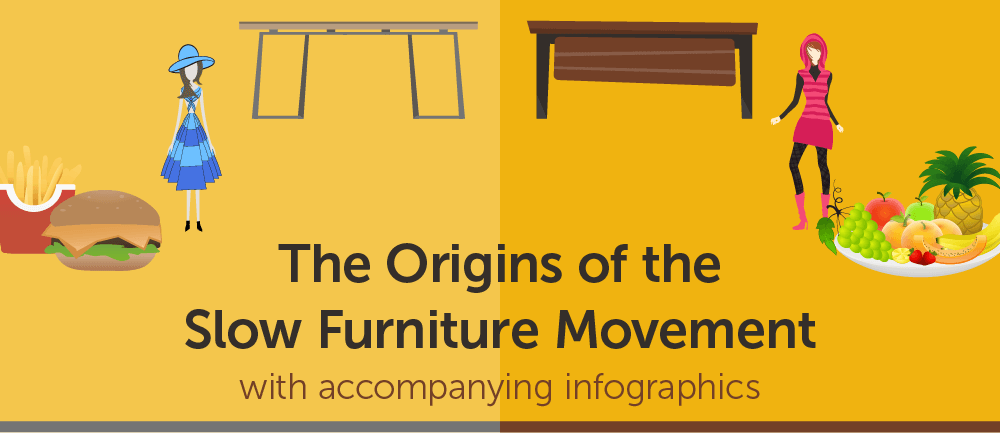
The Origins of the Slow Furniture Movement
Life is a constant learning experience. I know as I journey through, I’ve found myself collecting life lessons that I learn from my husband, my children, my elders, my mistakes, my triumphs and my failures.
I’ve learned that running through a drive-through for a quick meal most likely means I will eat in a hurry, and that might make my stomach hurt. I’ve learned that the excitement about a cheap price for a dress is over pretty quickly when the zipper breaks or part of the hem falls out. I’ve learned the value of time well spent with family and friends in the comfort of my own home.
Working for DutchCrafters, I’ve learned a lot about furniture: styles, parts, details, construction, woods. This work has brought into focus the role furniture plays in our lives that I hadn’t thought about much before. I now have a crisp vision for how valuable a well-made piece of furniture is, how it can be used, remembered and passed on and on.
Hurried meals, cheap dresses, and fast furniture won’t be around to spark stories or be passed on from generation to generation. But slow furniture will.
Before slow furniture there was slow food and slow fashion contributing to the slow movement.
How did we get here? What have we learned? Here’s a look at Slow Food and Slow Fashion and how they developed within the slow movement.
The Slow Furniture Movement – A Brief History
Slow Food, Slow Fashion and Slow Furniture
Slow Food
Back in the 80s a man named Carlo Petrini put his foot down. He participated in a protest that took place in Piazza de Spagna Rome in 1986 against the opening of a McDonald’s fast food restaurant. Why? Because fast food was not the celebration of the fine food that he believed in. Fast food cancels out the enjoyment of food preparation, the slowness in savoring flavors, the selection of quality ingredients and the time set aside for joining together to experience a meal.

Petrini went on to become the founder of the Slow Food Movement that has over 100,000 members in 150 countries around the world.
Members of the Slow Food Movement:
- Encourage purchasing food locally to support local growers.
- Encourage gathering to enjoy meals with family and friends.
- Focus on where food comes from and how it tastes.
- Encourage cooking together.

Slow Fashion
From the slow food movement, the idea of slow fashion emerged, led by Kate Fletcher.
Fletcher, part of the Centre for Sustainable Fashion, started the term slow fashion, recognizing, much like the followers of slow food, that there was a need to get back to a slower pace in the fashion world, where creating clothing had become a race to finish first and sell it cheap. Buyers wear it just a few times and throw it out, creating piles of waste in landfills.

What’s the slow fashion philosophy? Buy quality. Buy fewer things less often. Reject cheaply made, throw away clothes.
Members of the Slow Fashion Movement
- Are not fond of trends.
- Look to create quality clothing that will last longer.
- Support buying fewer things less often.
- Enjoy the art of making clothes.
- Celebrate the talents of those who make quality clothes.
Slow Designs
- Utilize quality sustainable materials, often locally sourced, made and sold.
- Can be found in smaller, locally run stores versus big chain stores.
- Release just a few styles each year.
- Value the fair treatment of people, animals and the planet.
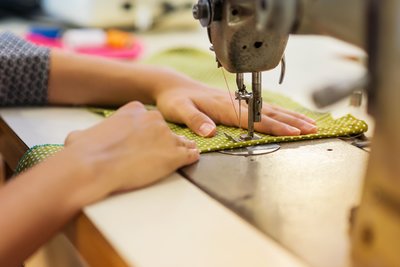
Slow fashion has more brands participating in making commitments to sustainable practices. They’re finding a better approach to making quality clothes that won’t have a negative impact on the planet.
Slow Furniture
Slow furniture is friends with slow food and slow fashion, investing in the product, the process and the person who receives it. The movement has been led by Jim Miller, DutchCrafters CEO, as he saw the commonalities between the qualities of slow food and slow fashion and the furniture that DutchCrafters sells.
Slow furniture is the kind you found at your grandparents’ house, furniture perhaps they inherited from their parents when it was made to last with better materials. It’s unique and full of character.
As the slow furniture movement grows, more and more people are learning the cost of fast furniture on homelife, our wallets, and the environment.
What is the Slow Furniture Movement?
The Slow Furniture Movement embraces the deliberate creation and use of durable furniture. A part of the Slow Movement that values quality over quickness, it has emerged as a response to the mass production of disposable “fast” furniture.
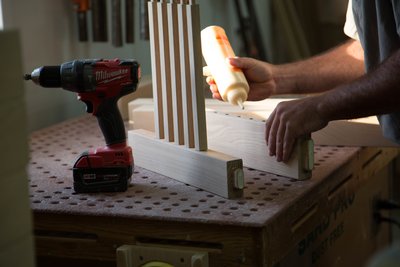
The slow movement that embraces all these areas isn’t just about taking the time to do things the right way. It’s about investing in the enjoyment that comes from building something well, eating and savoring a meal, making the meal, selecting the ingredients, wearing a well-made wardrobe piece and utilizing it to its full capacity.
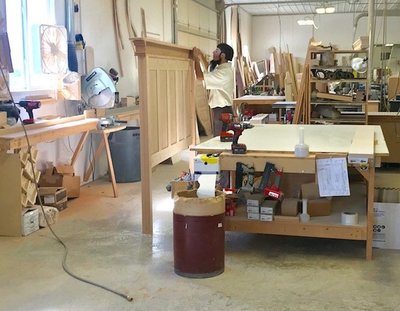
5 Principles of the Slow Furniture Movement
- Invests in quality made, highly durable furniture
- Recommends pieces of furniture that are multi-functional
- Accepts the extra time it takes to make good furniture
- Supports production of furniture that pays and treats workers fairly
- Rejects mass-produced and cheaply made fast furniture
Comparing Fast Food and Slow Food
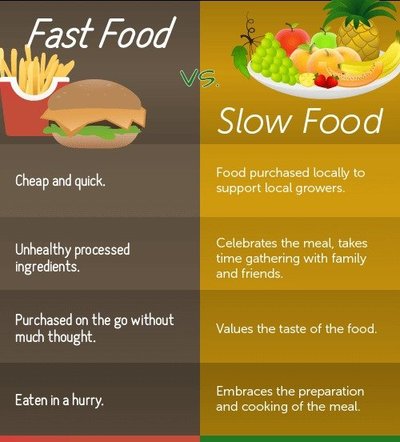
Comparing Fast Fashion and Slow Fashion
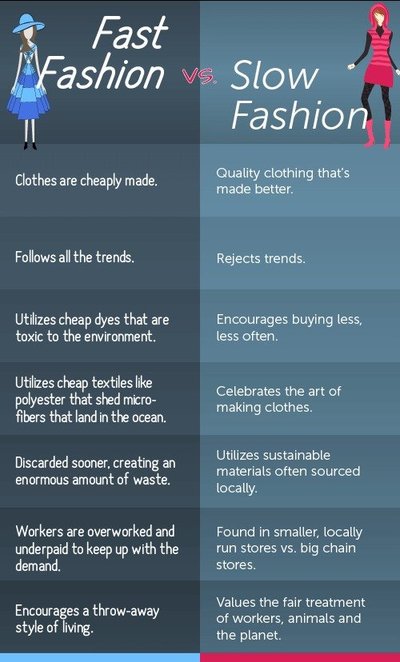
Comparing Fast Furniture and Slow Furniture
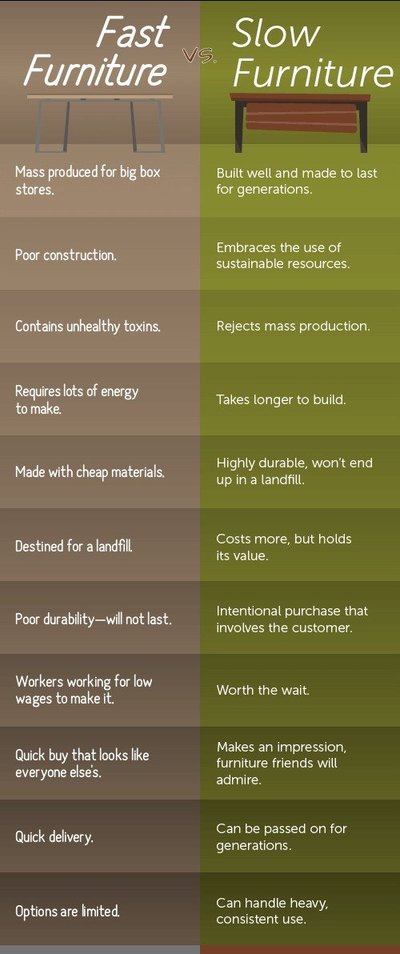
A quest for something better for ourselves and for our planet has led us to the slow furniture movement.

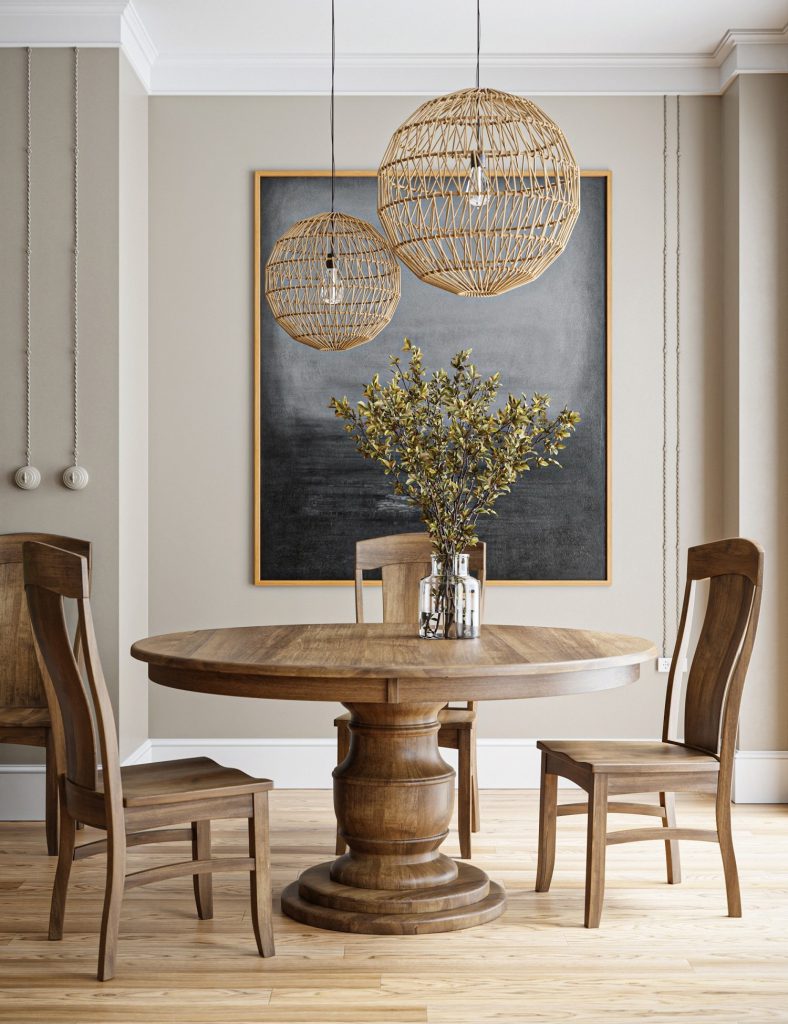
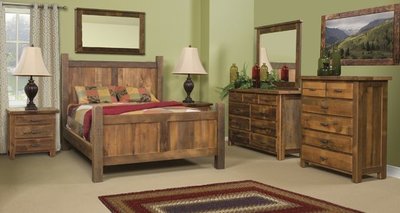
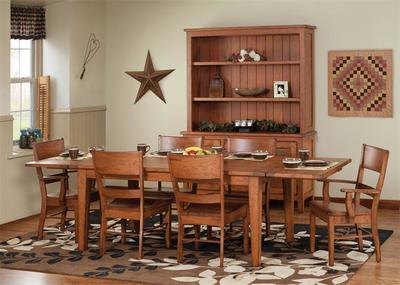
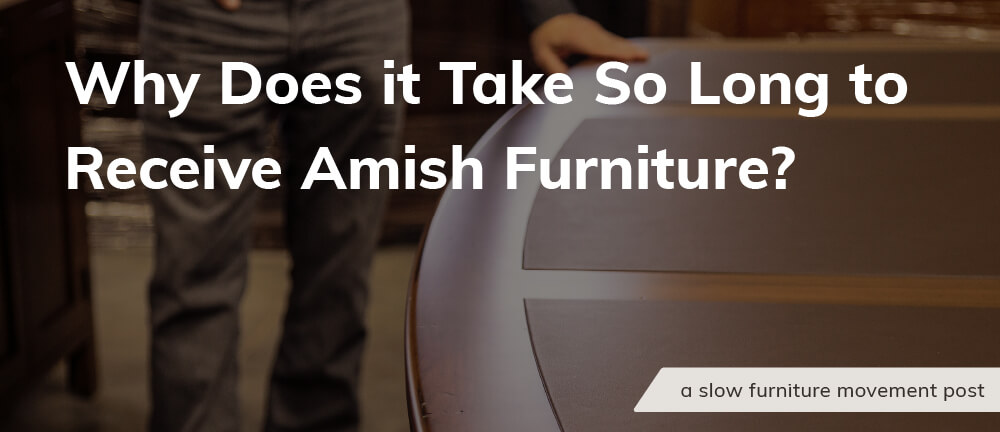
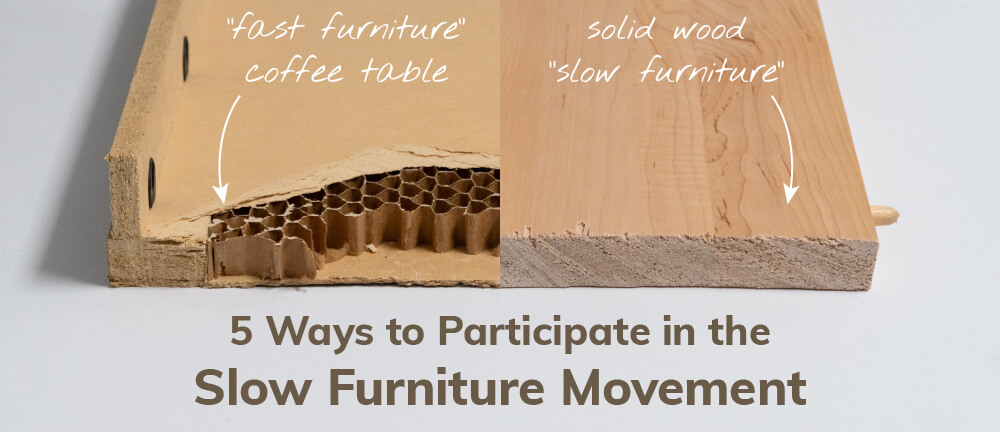
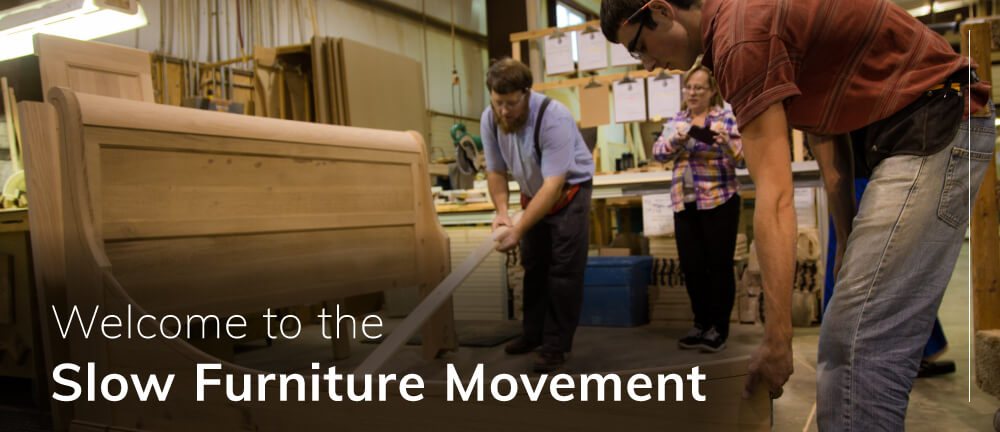

Lovely message, but I become distracted from the message when the wrong word is used. The phrase “zipper brakes” is wrong unless you you mean the zipper stops. This could be the case and then you are correct.
Hi Tahlea,
Thanks for catching that so we can correct it and thank you for joining us on Timber to Table!
I’m an upholsterer turned upholstery teacher and author. I’m thrilled to learn more about Slow Furniture. I’m going to be running a multi-part series on what adopting the Slow Furniture philosophy might look like to get started. It’s going to take lots of education to get consumers to adopt the slow movement in furniture. I think, from my interaction with consumers, people don’t think that much about how their furniture was made. It’s all about the education. Additionally, and I think you touched on this, the very process of making furniture, repairing and reupholstering provides meaning and satisfaction for the craftsman–experience, or even a DIY-er. I’m on board!
Thank you for your post. I hope to read more about the Slow Furniture movement.
Hi Shelly,
We are thankful to hear that you are also part of the Slow Furniture Movement! Thank you so much for your input and for visiting us on Timber to Table.